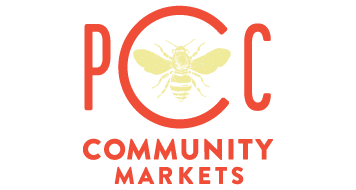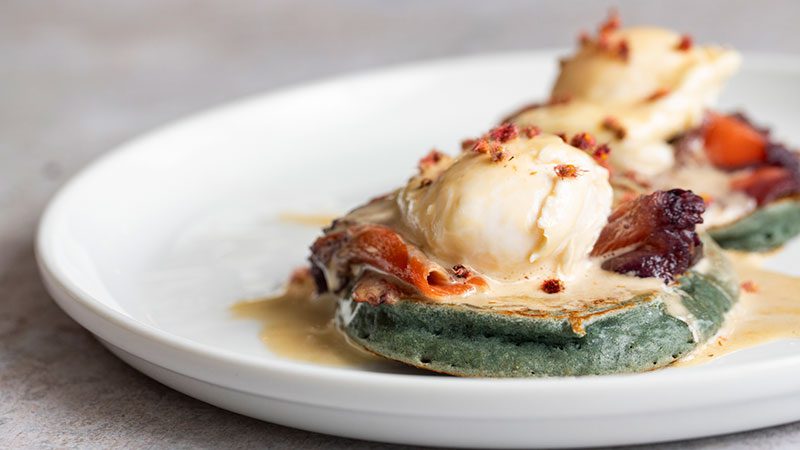Chef Nikki Demmert’s recipes on foraging, family and food sovereignty
By Rebekah Denn
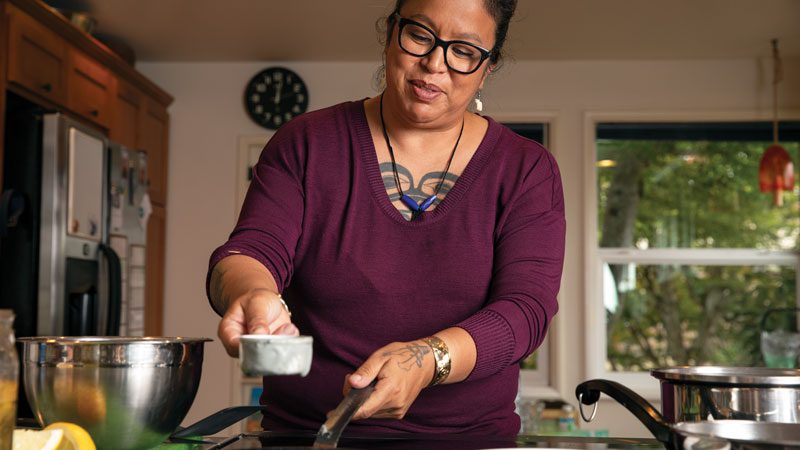
All photos by Charity Burggraaf
Even in urban Seattle, Nikki Demmert sees ingredients everywhere: Dark purple salal berries as delicious as huckleberries, morels popping up through untreated wood chips, conical clusters of sumac in a neighbor’s front yard.
“I’m always pointing stuff out to my kids and my friends: “You could eat that, you know? You should taste that.”
Demmert, director of operations for United Indians of All Tribes Foundation in Seattle, has a formal culinary background: A graduate of the Seattle Art Institute specializing in baking and pastry, she has been executive chef for the Confederated Tribes of the Colville Reservation and for a Washington winery. But the food philosophy she shares here comes from more foundational influences: Her childhood, spent partly on Prince of Wales island in Alaska, where ingredients came directly from the land and sea, and a belief in “rematriating” recipes to share the influence of Indigenous foods.
A Haida and Tlingit member, Demmert spoke with Sound Consumer while cooking and sharing recipes for a luxurious, Indigenous-influenced eggs Benedict — a base of blue corn pancakes with salal-cured salmon and sumac Hollandaise sauce over poached eggs. Rather than maple syrup, she makes a spruce syrup from the tender, edible young tips she forages from local branches. Demmert also shared the recipe for a classic Three Sisters Salad that was served at a recent staff lunch at Daybreak Star.
Condensed, edited excerpts from our conversation follow:
I learned all of this from my grandmother and my great-grandmother. So, my mom was a working mom, and my dad was working as a commercial fisherman, and the way our culture is, when you’re really young, you have to spend a lot of time with your grandparents and with your aunts and uncles. My great-grandmother had me a lot, and my grandmother during the summers, and my grandmother learned everything from my great-grandmother. I would spend the whole summer doing whatever my grandmother wanted, which was a lot. She’s a really strong, busy woman, and so that meant I was really, really busy.
We (preserved) all of her fish. We did all of the family’s fish. We did all of the family’s berry picking and jams. And then later in the fall we were doing all of the deer meat and then later seal meat, seal oil.
When I got older, I started doing that kind of stuff for all of her friends, other elders that couldn’t, or didn’t have somebody in their family that was supplying for them. My job would be to hunt — for instance, a seal. I would jump in my skiff, go get a seal, clean it, take care of it where it was, and then come back and break it down, and make their oil or just part it out enough so that they can manage it by themselves.
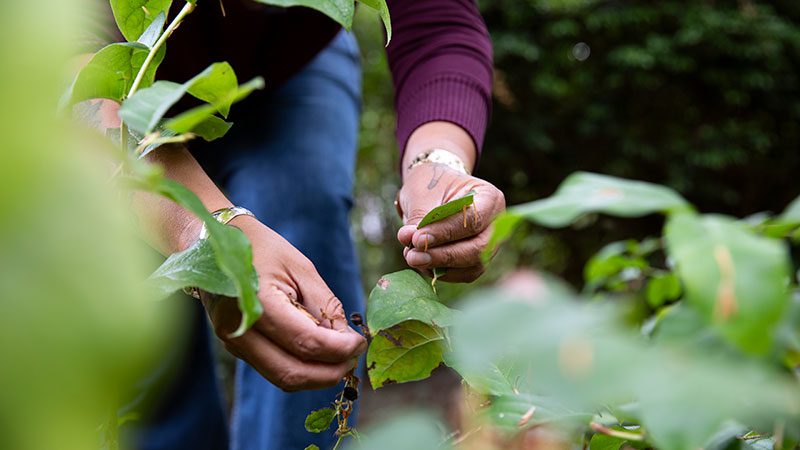
My mom worked for Daybreak Star for like eight years when I was really little. I did the preschool early program and then preschool, and it was amazing. It was formative. I still remember to this day, we would go into class and take off our shoes and put on our moccasins, and all of our teachings were Indigenous rooted. The alphabet and everything like that, they were all pictures of Indigenous people and Indigenous things. When I left there and went to Seattle Public Schools, it was just shocking. It was shocking how big everything was. I remember just missing it all. All the teachers were aunties and uncles. They weren’t Mrs. Somebody or Mr. Somebody, they were Uncle Bernie and Auntie Joy.
Honoring Indigenous foods
I feel like there are a lot of recipes that people forget are Indigenous. Something like lox — obviously, everybody from every walk of life all over the world found ways to cure and preserve salmon or other fish. The things that get missed, in current life in general, is that we forget to honor the place and the body that it comes from. In doing so, by way of Potlatch, when you take something like that and you remember to honor it, you’re honoring yourself.
Seal oil was used like a condiment, but it was also used to cook seal meat, like confit style. What my grandmother would do is, you could take some seal meat that you had, either smoking or just raw, and then you could brown that in a little bit of seal oil. Then in another pot, she would take a chunk of fat, render it, and then put it in all the aromatics, onion and garlic and carrots and celery and all those things, and then put the meat in there and brown it, add a bunch of seasonings to it, maybe a little bit of water. It would all simmer in its own juices from the vegetables and the oil and make a stew that was amazing.
It’s just having access. Have you ever seen a sea bean? Up in Alaska, it’s one of my favorite vegetables. It’s so diverse, it’s so rich, it’s so savory, and you can do so much with it, and we eat a lot of it up north. It’s literally everywhere around here. But you have to have a boat to get to places where the water is clean enough to forage.
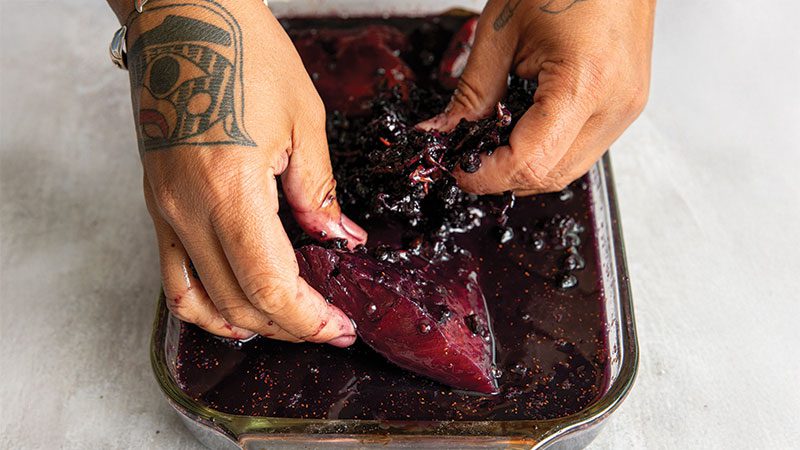
My dad and his siblings and my grandmother and her siblings were all in boarding schools. Their close connections were loose: They saw each other, but there wasn’t intimacy, like close family love. My mom would always say, ask your grandmother all the questions. Just keep her talking, because she needs to remember. So I’d ask her random questions all the time, like, “What was it like?” It was really horrifying.
She lived in a Catholic boarding school with nuns, and, because she was good at it, she did all of their food preservation with the nuns in the kitchen. She would tell me stories about hating the guy that had the pear farm near them, because he would bring so many pears — all of the pears, good pears, bad pears, all of it. It was her job, she would literally be taking care of that for months. Into her old age, she would not eat a canned pear for her life.
Rematriating recipes
I was thinking about rematriation because I was just thinking about how we can make recipes in a contemporary way that are Indigenous-rooted. Taking back ownership of something like eggs Benedict, is kind of like recolonizing. Reverse colonizing. We live in this world with everybody and we can still grab hold of what is true to our culture, and create something like an eggs Benedict. Here in this contemporary world, myself being a matriarch, I can make recipes that are rooted in indigeneity and pass them on. I can teach my children and people that sumac is an amazing spice. Spruce tips are amazing. And salal berries, they’re literally everywhere in this town. We need to recognize that they’re edible, and we can source things right here. And that is still soul connection.
It’s not different, just because I’m here in Washington and not in Alaska, doesn’t make it less. We’re in a different space doing the same thing. I’m a firm believer that your soul remembers your connection to that. I think that, in and of itself, is the medicine that grounds us.
